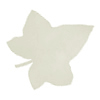|
Health
Issues & Warnings
when not to use herbs & oils [page 1 of 3]
Herbs
and their essential oils can offer us a great deal
of benefits - but the use of herbs and oils should
never be taken lightly. Some herbs are poisonous
even in the smallest of doses, and many can cause
complications when too much is taken. It is not
only the plant which needs to be carefully identified,
and wisely used, but your own health conditions
need to be taken into consideration too. This article
aims to offer some basic advice and cautions when
using herbs and oils, and lists known herbs and
oils which should be avoided for various reasons
[pregnancy, epilepsy, high blood-pressure, prescription
drugs, alcohol...].
| General Warnings | Hazardous
Oils | Oils to use with Caution | Photosensitising Oils | Skin
Irritants |
| Pregnancy | Prescription Medicine | Homeopathy | Epilepsy | High Blood
Pressure | Depression | Alcohol | Children |
 General
Warnings General
Warnings
•
Never apply undiluted essential oils to the skin. The exception here is Lavender [for minor cuts,
burns, spots, headaches] and Tea-tree [for spots,
cuts, fungal infections] and even these two should
be used in moderation - or not at all if you are
unfortunate to suffer an allergic reaction to these
oils! Always test on a small patch of skin first
- or sniff the oil, you will know if it's not for
you.
•
Never use essential oils internally - unless specifically prescribed by a professional
/ doctor.
•
When using oils for external use, dilute the
essential oil/s with carrier oil [such as Almond,
Jojoba, Sunflower...] generally speaking up to 10
drops of essential oil to 10ml carrier oil.
•
When using oils in a bath, mix them with a little
carrier oil or milk before adding them to the water.
This will not only help the oils mix with the water
and prevent them from evaporating as quickly, but
it will also help prevent them forming a film across
the surface of the water - potentially allowing
larger amounts of oils to come in contact with your
skin, eyes, mouth etc... Generally speaking, for
an adult, up to 6 drops of essentail oil/s should
be sufficient for a full bath. For children between
5-12 use no more than 3 to 4 drops essential oil
mixed with a carrier.
•
Increasing the dose of essential oils and herbs
does NOT increase their effectiveness. Some
oils and herbs are toxic in large amounts.
•
Never store or use essential oils [pure or diluted]
in plastic or metal containers or they will
become contaminated. Dark glass is the best for
storing oils and herbs - and always store in a cool,
dry, dark area.
• Never use seeds sold for horticultural purposes - They are not for human consumption and may have
been coated with chemicals to help preserve them,
or to help them grow. Only ever use seeds, plants
and oils intended for human use.
•
If harvesting herbs from the wild only take what you need and only if the plant is
growing abundantly - however, some plants are protected
and must never be picked, so be sure to never pick
rare or uncommon plants from the wild.
• Do not harvest bark from the wild - if you
are harvesting bark from a tree in your garden be
sure to never take a complete strip going around
the trunk / branch as this will prevent nutrients
from rising up the tree and you may kill the tree!
Avoid over-stripping, preferably taking it from
a peripheral limb which can be cut back. Harvest
you sap in Spring when the sap rises, or Autumn
as the sap falls.
• Consider where the plant has been growing
and whether it could be contaminated by pollution.Avoid
plants growing along roadsides, close to factories,
in built-up areas or where crop spraying occurs.
• And of course... make sure you identify the
plant correctly! It's an easy mistake to make -
if you're ever in doubt, the safest thing to do
is not use it. Even some herbs sold over the counter
have been mistakenly identified - always make sure
you purchase your herbs and oils from a reputable
source!
•
When working with essential oils [blending your
own oils for example] make sure you drink plenty
of water to keep you hydrated; clear up any spills
immediately; work in a well ventialated space; and
remember to take breaks!
 Hazardous
Oils Hazardous
Oils
The following
oils are generally considered unsafe for use in
aromatherapy and self-treatment. The
list includes those which are known to be narcotic,
toxic, cause damage to the skin, provoke fits, or
are capable of causing a miscarriage. Trained medical
professionals and homeopaths may well use some of
these herbs and oils in minute amounts, but these
oils should never be used in self-treatment or aromatherapy.
Aniseed - Pimpinella anisum - Relatively
high toxicity, and is also addictive.
Arnica - Arnica montana - The essential
oil of arnica is highly toxic. However, the tincture,
and Arnica cream/ointment, readily found in health-food
shops and chemists, is perfectly safe for external
use and has many benefits.
Bitter Almond - Prunus amygdalis, var.
amara - Contains cyanide. The Almond oil used
as a carrier oil comes from the Sweet Almond and
is perfectly safe.
Boldo Leaf - Peumus boldos - Extremely
toxic.
Calamus - Acorus calamus - Possible
carcinogenic.
Camphor - Cinnamomum camphora - Brown
and Yellow Camphor are toxic and carcinogenic and
should not be used. White Camphor is considered
relatively non-toxic - it is however an enviromental
hazard or marine pollutant.
Cashew - Anarcardium occidentale -
The shell oil and its vapour are highly irritant
and should not be used in any form.
Chervil - Anthriscus cerefolium -
Toxic and irritant. Possible carcinogenic.
Cinnamon Bark - Cinnamomum zeylanicum - Essential oil from the bark is a very strong skin
irritant - the leaf offers a slightly safer oil,
although it is still an irritant and should only
be used with caution [in small amounts and well
diluted!]. The leaf oil smells more like cloves,
and the bark oil smells like cinnamon.
Costus - Sausserea lappa
Cotton - Gossypium herbaceum - Cotton
root bark and seed oil are potentially toxic.
Horseradish - Cochlearia armorica, Armoracia
rusticana
Jaborandi Leaf - Pilocarpus jaborandi
Melilotus - Melilotus officinalis
Mugwort [Armoise] - Artemisia vulgare - Toxic, high thujone content, abortifacient.
Mustard - Brassica nigra - Considered
one of the most toxic essential oils.
Origano - Origanum vulgare - A powerful
emmanagogue [avoid during pregnancy] and a fairly
severe skin irritant. The closely related Marjoram
[Origanum majorana] is a far safer oil to
use.
Origano [Spanish] - Thymus capitatus
Pennyroyal [European] - Mentha pulegium - Presents a risk of poisoning.
Pennyroyal [N. American] - Hedeoma pulegioides - Presents a risk of poisoning.
Pine [Dwarf] - Pinus pumilio or Pinus
mugo - Several species of Pine are used to yield
essential oils - not all of them are hazardous,
but be sure you know which one you are using, and
avoid Dwarf Pine.
Rue - Ruta graveolens
Sage - Salvia officinalis - There
have been a number of cases of hospitalisation following
the self-administration of Sage essential oil. Clary
Sage [Salvia sclarea] is generally used as
a safer alternative [although Clary Sage should
never be used with alcohol as it will cause nightmares!]
Sassafras - Sassafras albidum - Presents
a risk of poisoning.
Sassafras [Brazilian] - Ocotea cymbarum - Highly toxic, carginogenic, irritant, abortifacient.
Savine - Juniperus sabina
Savory [Summer] - Satureja hortensis
Savory [Winter] Satureja montana
Southernwood - Artemisia abrotanum
Spanish Broom - Spartium junceum - Toxic
Sweet Birch - Betula lenta - Presents
a risk of poisoning.
Tansy - Tanacetum vulgare
Thuja [Cedarleaf] - Thuja occidentalis - Presents a risk of poisoning.
Thuja Plicata - Thuja plicata - Presents
a risk of poisoning.
Wintergreen - Gaultheria procumbens - Toxic, irritant, sensitising. Also considered
an enviromental hazard or marine pollutant.
Wormseed - Chenopodium anthelminticum - Considered one of the most toxic essential oils.
Wormwood - Artemisia absinthium -
Toxic, abortifacient.
 Oils
to use with Caution Oils
to use with Caution
The following essential oils should be
used in moderation and with caution. Some of the
oils have a risk of toxicity. If you do use any
of these oils, use them in moderation and only for
a few days at any one time.
Basil - Ocimum basilicum
Bay Laurel - laurus nobilis - Possible
narcotic properties, use in moderation.
Cedarwood - Cedrus atlantica
Cinnamon Leaf - Cinnamomum zeylanicum
Eucalyptus - Eucalyptus globulus
Fennel [Sweet] - Foeniculum vulgare
Hyssop - Hyssopus officinalis
Lemon - Citrus limonum
Nutmeg - Myristica fragrans
Orange - Citrus aurantium
Parsley - Petroselinum sativum -
Moderately toxic and irritant, use in moderation.
Star Anise - Illicium verum - Narcotic
in large amounts, use in moderation only.
Tarragon - Artemisia dracunculus - Moderately toxic, possible carginogenic, use in
moderation.
Thyme - Thymus vulgaris
West Indian Bay - Pimenta racemosa - Moderately toxic, can lead to cerebral disorders.
Use in moderation only.
 Photosensitising
Oils Photosensitising
Oils
The following
oils should not be used on skin before exposure
to the sun [or a sunbed] as they increase the skin's
sensitivity to UV light, which could result in severe
burns. There is some evidence to suggest that the
photosensitising effect of some oils does not occur
if the oils are diluted to less than 2% [P.Davis]
but unless there is a real therapeutic need for
them, it would be wiser to avoid using them if you
intend to be out in strong sunshine.
Angelica - Angelica archangelica
Bergamot - Citrus bergmia
Cumin - Cuminum cyminum
Lemon - Citrus limonum
Orange - Citrus aurantium
Other citrus oils such as Tangerine, Mandarin,
Lime [expressed 'peel' oil], Citronella and Sweet Orange have not been proved conclusively
to be photosensitisers - but should perhaps be used
with caution when exposing skin to UV light. Whilst Grapefuit does contain some of the Furocoumarins
that have a photosensitising effect, research has
shown that one or more of the other constituents
appear to have a neutralising effect.
Herbs which can increase sensitivity to sunlight
include :
Bishop's Weed - Ammi majus -
Can cause an allergic reaction to sunlight.
Fig - Ficus caria - The milky latex from
the stems and leaves may cause an allergic reaction
to sunlight when applied to skin.
Masterwort - Imperatoria ostruthium - may
cause an allergic reaciotn to sunlight if applied
to the skin.
Rue - Ruta graveolens - May cause an
allergic skin reaction to sunlight if taken internally.
St John's Wort, Y Fendigedig [Welsh] - Hypericum
perforatum
Turmeric - Curcuma longa, C. domestica - if you are taking medicinal doses of Turmeric
avoid over-exposure to the sun.
 Skin
Irritants Skin
Irritants
If you suffer from sensitive skin you may find that
many oils irritate your skin if not diluted enough
- generally speaking most essential oils are perfectly
safe used in a 3% dilution [for massage blends],
less for people with sensitive skin, children and
elderly people with frail or thin skin. However,
there are some oils which are best used in no more
than a 1% dilution - and others which shouldn't
be used on the skin at all, but these are included
in the Hazardous Oils list.
Always dilute the following oils to 1% before using
them on your skin :
Allspice [Leaf and Berry] - Pimenta diocia
Angelica - Angelica archangelica
Bay Laurel - Laurus nobilis
Black Pepper - Piper nigrum
Cinnamon Leaf - Cinnamomum zeylanicum [Essential oil from Cinnamon Bark should never be
used on the skin - it is much more of an irritant
than oil from the leaf].
Citronella - Cymbopogon nardus
Clove [All parts] - Eugenia caryophyllus
Ginger - Zingiber officinalis
Lemon - Citrus limonum
Lemon Balm - Melissa officinalis
Lemongrass - Cymbopogon citratus
Lemon Verbena - Lippia citriodora
Orange - Citrus aurantium
Nutmeg - Myristica fragrans
Peppermint - Mentha piperata
Scotch Pine - Pinus sylvestris - Avoid in allergic skin conditions
Herbs which can cause skin irritation or contact
dermatitis include :
Agave - Agave americana - External
use may cause skin irritation
Cabbage - Brassica oeracea - A cabbage
poultic may cause blisters if left on for several
hours.
Elecampane - Inula helenium- Can cause
skin reactions.
Marjoram [Wild] - Origanum vulgare - External use may cause irritation of the skin.
Mayweed, Stinking Mayweed - Anthemis cotula - All parts of this plant can cause blistering
if applied fresh to the skin.
Peruvian Balsam - Myroxylon balsamum - May cause allergic skin reactions.
Polypody - Polypodium vulgare - may
cause a skin rash when applied externally.
Rue - Ruta graveolens- The fresh plant
may cause dermatitis - wear gloves if handling it.
Scots Pine - Pinus sylvestris - Do not use if prone to allergic skin reactions.
Skunk Cabbage - Symplocarpus foetidus-
Handling fresh skunk cabbage may cause the skin
to blister.
Turmeric - Curcuma longa, C. domestica
Continue
to Next Page 
|











